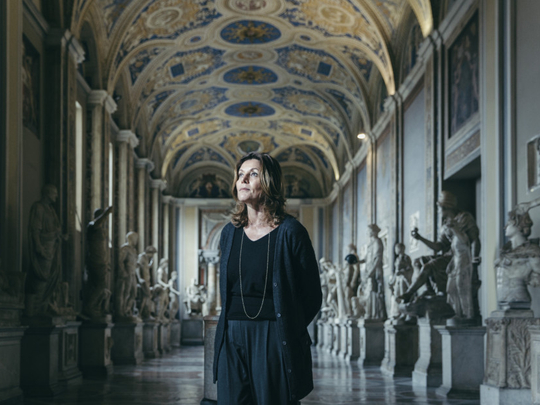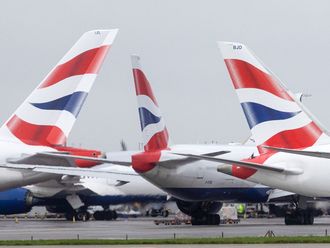
VATICAN CITY
Vatican City has been governed by men since it was established as an independent state in 1929. A year ago, however, a woman joined the upper ranks: Barbara Jatta, the first female director of the Vatican Museums.
In the 12 months since her appointment, Jatta has put her stamp on the role, resisting some of her predecessor’s initiatives and forging her own path.
Jatta was the only woman on an initial list of six candidates, and she was chosen by Pope Francis. In the post since January, she oversees some 200,000 objects and an array of museums, papal apartments, sculpture courtyards and other sites, including the Sistine Chapel.
The chapel is one of the Roman Catholic Church’s holiest places, where popes are elected. It is also packed almost daily with ever-larger crowds scrambling to gaze at Michelangelo’s famous frescoed ceiling. The Vatican Museums say visitor numbers in 2017 are expected to reach a record, significantly exceeding the 6 million that Jatta’s predecessor, Antonio Paolucci, defined as an annual upper limit.
The escalating totals pose the toughest challenge to Jatta’s directorship.
Jatta is friendly yet firm, and she expresses high ambitions for herself and for the institution. In an interview, she said that she had worked for 20 years in the Vatican Library, leading its prints department from 2010. When she heard of her nomination for the Vatican Museums role, she said, “it came as a shock at first, to face such a big change”.
Sudden revelation
Regarding her gender, Jatta said she “didn’t realise what it meant until I started the job”.
Her office, which overlooks the Michelangelo-designed dome of St Peter’s Basilica, was filled with family pictures, a framed photograph of Francis, and the portrait bust of another predecessor: sculptor Antonio Canova, the first director of the papal museums.
Jatta said that art had played a big role in her family: Her mother and sister are art restorers; her grandmother, who was originally from Russia, was a painter; and her paternal ancestors founded an archaeological museum named after the family in Ruvo di Puglia, in southern Italy.
Eike Schmidt, German director of the Uffizi Gallery in Florence, said Jatta’s appointment was a positive sign. “Within the male-dominated Vatican, to give such a prominent role to a woman was very good news,” he said, adding that he hoped the world of culture would soon “move beyond” gender considerations and “look at people for what they did and what they do”.
Running the Vatican Museums is a colossal job. Whole sections of the museums are undergoing renovations ordered by Paolucci, a former culture minister who was director for nine years and who had previously led Florence’s museums.
Tourism is a lifeline not only of the museums, but of the Vatican as a whole. Of the €100 million (Dh440 million) in annual revenue generated by the museums, roughly half goes to the state, according to Paolucci.
That complicates any director’s job. So does the fact that many of the museums’ sites have both artistic and religious significance — starting with the Sistine Chapel.
The sweat and breath of millions of visitors, and the dust they bring in, endanger the chapel’s frescoes, Vatican conservation teams have found. Paolucci once announced that walk-in visits would end once numbers reached 6 million a year. But Paolucci left without introducing his plans.
Jatta, who worked under Paolucci as deputy director and heir apparent starting in mid-2016, said she was against preventing walk-in access to the museums. “We are also a museum with moral and spiritual value. The Sistine Chapel is also a chapel, and that’s something that cannot be forgotten.”
— New York Times News Service












